I know that the Arduino Nano can handle 12 volts, and it says it is recommended to power it between 7 and 12 volts. So I am wondering do I just hack together a 12 volt adapter to a Mini-B or is it possible to power it through the ICSP header?
-
2It's good that you asked BUT you need to read the manual more closely than you did, that your Nano's days may be long on the face of the land. – Russell McMahon Mar 08 '13 at 04:34
-
I routinely run Nano's from the 5V output from a Raspberry Pi. I know it can handle 12 Volts but that means the regulator must dissipate that extra voltage as heat - and the old adage is that every 19 degrees temperature increase in semiconductors cuts their lifetimes in half. But on the other hand, Uno's don't seem to mind 12 Volts at all, hence the regular CCTV power connectors. – SDsolar Feb 03 '17 at 21:57
-
@SDSolar, clarifying question: Are you talking degrees Fahrenheit or Celsius? I've heard this about 10° Celsius, which would fit nicely with 19 Fahrenheit, but maybe I've actually gotten a wrong number. – Kjeld Schmidt Feb 19 '18 at 21:07
3 Answers
The Arduino Nano accepts the 7-12 Volt input power not from the USB port, but from the Vin pin (pin30), see the diagram below:

If you want to supply regulated power, then a 5 Volt regulated adapter needs to feed the +5V pin (pin27) instead.
From the official Arduino Nano page:
Power:
The Arduino Nano can be powered via the Mini-B USB connection, 6-20V unregulated external power supply (pin 30), or 5V regulated external power supply (pin 27). The power source is automatically selected to the highest voltage source.
The FTDI FT232RL chip on the Nano is only powered if the board is being powered over USB. As a result, when running on external (non-USB) power, the 3.3V output (which is supplied by the FTDI chip) is not available and the RX and TX LEDs will flicker if digital pins 0 or 1 are high.
- 50,188
- 8
- 103
- 200
-
1If feeding 5V to pin 27 you should check that regulator is happy wit this. Datasheet for Nano should say. – Russell McMahon Mar 08 '13 at 04:33
-
-
[Nano cct diagram here](http://arduino.cc/en/uploads/Main/ArduinoNano30Schematic.pdf). Interesingly, regulator data sheet leaves it uncertain. Regulator is uA78M05. [Datasheet here](http://www.ti.com/lit/ds/symlink/ua78m05.pdf) It neither says it is reverse polarity protected nor that it isn't and has no sample circuits. Ye Olde 7805 needed a reverse protection diode for safety if there was a risk of Vin being shorted when Vout was stiff and that MAY apply here or not. It may be a case of "works well enough usually". Or it may be more bulletproof than the old versions. – Russell McMahon Mar 08 '13 at 12:46
-
@RussellMcMahon: Yes that is an interesting question. Looking at http://www.ti.com/lit/ds/symlink/ua78m05.pdf I can see various paths for current from OUTPUT to ground, or OUTPUT to INPUT if INPUT is lower than OUTPUT. Probably two cases -- INPUT disconnected, or INPUT grounded. It would be interesting to know the thinking on this! – gwideman Mar 09 '13 at 01:19
-
1The part about 3.3V being unavailable when not powered via usb is no longer on the page. Is it still valid? – Antoine May 14 '18 at 20:29
-
2A note of caution: The Nano meanwhile switched to a [LM1117](https://content.arduino.cc/assets/NanoV3.3_sch.pdf) (cur. version 3.3). This still has a [max. VIN rating of 20 V](http://www.ti.com/lit/ds/symlink/lm1117.pdf) but ALL the cheap clones use a AMS1117 with [max. VIN of 15 V](https://datasheet.lcsc.com/szlcsc/1810231832_Advanced-Monolithic-Systems-AMS1117-5-0_C6187.pdf). I wouldn't go above 12 V in the latter case. **P.s.** Just tested: 12 V work fine with my no-name version. – Suuuehgi Feb 05 '20 at 12:36
-
According to the schematic there's a Vin input somewhere that feeds an on-board voltage regulator. That's where you put the +7 to 12V NOT into a USB jack!
- 2,679
- 13
- 19
You could power from the ICSP header, but it has the same caveats. ICSP Pin 2 is connected to the regulated 5v rail. Only connect regulated 5v to that pin. Pin 6 is ground.
So the only way to use 12v in would be to the VIN pin.
- 72,580
- 7
- 90
- 202